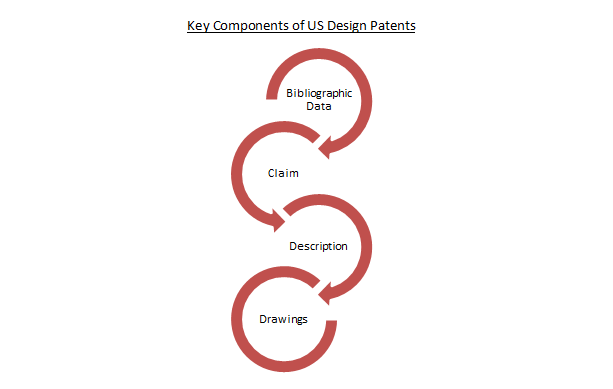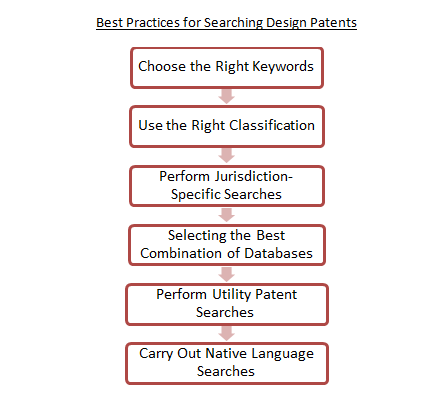How to Conduct a Design Patent Search
Securing a design patent is easier as compared to obtaining a utility patent for an invention. Despite this ease of getting a design patent, applicants often face patent rejections. A common and essential practice for ensuring the patent-worthiness of designs is carrying out exhaustive design patent searches. While applicants can conduct such searches on their own, it is advisable to seek professional assistance for obtaining accurate search results.
The following article discusses everything you need to know about design patents and the best practices for carrying out design patent searches.
Table of Contents
Design Patent and its Components
A design patent is a type of legal protection granted to the ornamental and aesthetic appeal of a functional product. Essentially, a design patent allows the rightful owner to exclude others from making, using, or selling the patented design for a specific period (such as 14 years for the US) from the date of a patent grant.

A typical US design patent has four main components – bibliographic data, claim, description, and drawings. Bibliographic data is the first section of a design patent and includes numerous details such as the inventor’s name, assignee, and important dates such as application date and filing date. The second section of a design patent is the claim section wherein only one simple claim is allowed. The third section is the description which highlights the various views of the design patent drawings. The last and main section of a design patent is the drawings. This section highlights what is claimed in the design patent. As a general rule in the US, the claimed part of the design is illustrated in solid lines while the prior art section or non-claimed section is illustrated in broken lines.
Best Practices for Searching Design Patents
Here are the top six best practices for conducting accurate and exhaustive design patent searches:

- Choosing the Right Keywords – Whenever an amateur patent searcher is tasked with searching design patents for a new product or invention, he/she quickly reads the invention disclosure and carries out simple keyword-based searches. On the other hand, a seasoned professional understands the six main principles of fetching the right keywords/synonyms and applies them in his/her search strategy. These six principles include extracting the terms/keywords from the invention disclosure, reading technical literature related to the domain, researching technical jargons used in the industry, reading market literature and market jargons, using different spelling variants of a word, and running iterations. Besides, it is imperative to revise one’s search strategy periodically.
- Using the Right Classification – When it comes to design patents, every patent searcher is familiar with the Locarno Classification, a classification system that is used by most patent offices around the world. Searchers usually look for the relevant Locarno classes while creating a design search strategy. Apart from the Locarno classes, one can also use different national design classes. Countries such as the US, Canada, and Japan have their own design patent classification systems. For instance, if you are conducting searches for US design patents, it is advisable to use both Locarno classes and the US design patent classifications to create a comprehensive search strategy.
In case the patent hits in a class are high, it is good practice to use a combination of classes and relevant keywords to reduce the number of patent hits. Furthermore, if a technology is covered under multiple sub-classes, then it is a good idea to perform broad searches to capture all the relevant patents.
- Performing Jurisdiction-Specific Searches – A patent searcher must know the type of search options that are available while searching in a particular country. For instance, in the US, one can perform keyword-based searches, Locarno classification-based searches, national design class-based searches, and citation searches in the English language. While in Japan, one can conduct keyword-based searches, Locarno classification-based searches, and national design class-based searches – in English and Japanese language. So, it is advisable to be aware of the search options available in a specific jurisdiction to ensure comprehensiveness of the search process.
- Selecting the Best Combination of Databases – Choosing the right database for carrying out design patent searches is more crucial than one might think. An ideal search database should have good coverage, i.e., it should cover maximum jurisdictions. Some of the popular design patent search databases – Questel Orbit, PatSeer, Design View, and Global Design Database, cover 64, 28, 67, and over 100 jurisdictions, respectively. As none of the databases cover all jurisdictions/countries individually, it is a good practice to use a combination of paid and unpaid databases such as Design View for carrying out a comprehensive search.
- Performing Utility Patent Searches – Although utility patents are related to mechanism while design patents are related to aesthetics, conducting utility patent searches can be helpful while looking for design patent prior arts. This is because most utility patents include drawings to better explain the claims and description. These drawings can also be used as prior art against a design patent. Therefore, one should not only search design patents on the relevant databases but should also look for utility patents to avoid missing out on any significant prior art.
- Carrying Out Native Language Searches – Not all applicants file their design patent applications in the English language. Applicants in countries such as Germany, France, Japan, South Korea, and China prefer filing patent applications in their native language. Therefore, it is advisable to use a combination of English and foreign language keywords while searching patents. For instance, if you are looking for patents in Japan, your foreign language keyword would be in Japanese. In case you do not know Japanese keywords or need to identify different synonyms of a Japanese word, you can use translation sites such as Google Translate.
Conclusion
Although it is crucial to conduct patent searches before filing for a design patent, capturing patents that are similar or relevant to one’s design is often tricky. In order to avoid missing out on relevant patents, one must either perform in-house searches or get professional assistance. Since most businesses are pressed for time and resources, they can avail services from companies such as ours. Sagacious IP’s Design Patent Search service focuses on the aesthetic part of an invention and allows businesses or inventors to identify relevant prior arts or potential infringements. Our team identifies relevant design classifications and term sets to use them for devising a search strategy that covers all the relevant design patents comprehensively. Click here to know more about this service and click here for the webinar on the topic.
-Rohit Kumar (Engineering Searching) and the Editorial Team
Having Queries? Contact Us Now!
"*" indicates required fields




